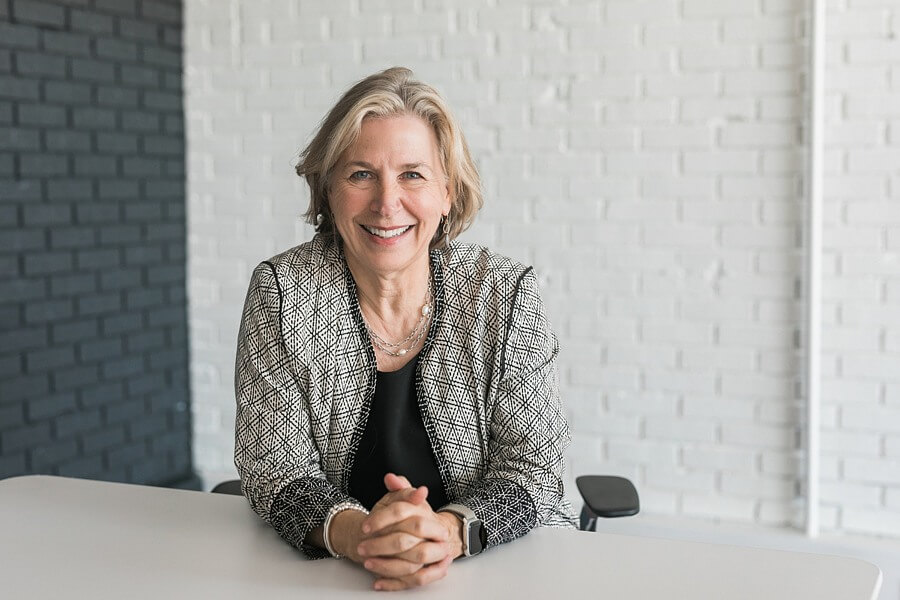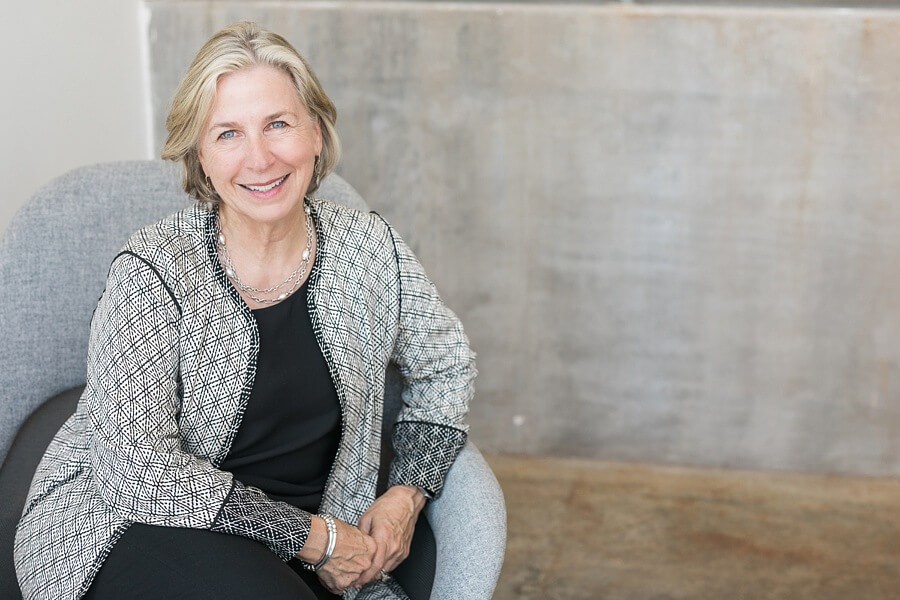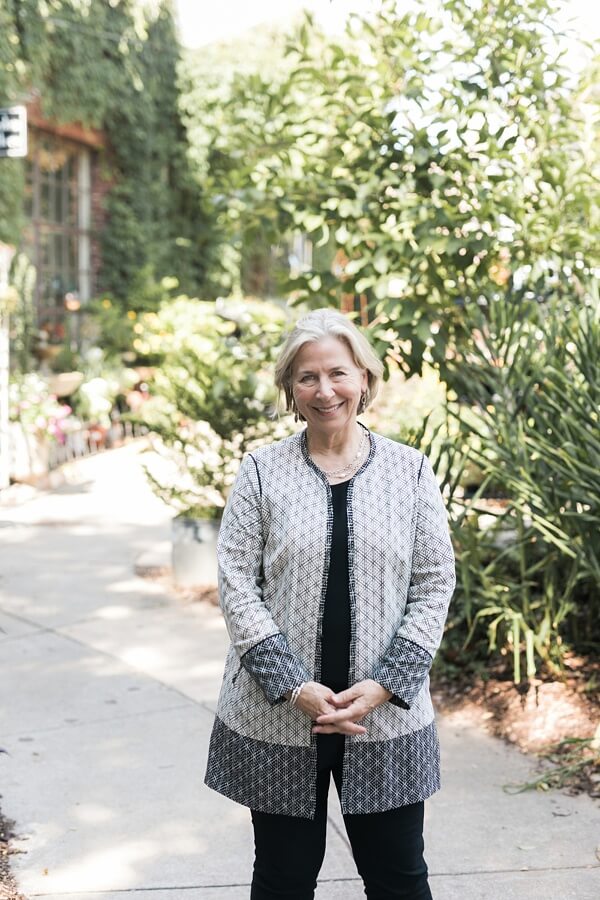Cathy Sloss Jones is an engineer of human connectivity, an artist whose masterworks are Downtown Birmingham’s ever-blossoming vibrant communities. The fruits of her city-building labors include Lakeview and its Pepper Place Entertainment District, the Hope VI housing at Park Place and One Federal Place among others. It’s only fitting that the great-great-granddaughter of the man who was instrumental in the Magic City’s founding and for whom Sloss Furnaces is named would be carrying on his legacy of building a thriving Birmingham.
To do this work, one has to possess the dual abilities to see the bird’s-eye view and dive deep. Cathy does both, and her enthusiasm about Birmingham’s bright future and eagerness to connect the dots to move our city forward is inspiring. She’s been working with her father in the family business, Sloss Real Estate, since 1975, and she became President and CEO in 1986. Since then, she’s done innovative work across the country — all with the aim of bringing growth and enrichment to Birmingham.
We are honored to introduce Cathy Sloss Jones as today’s FACE of Birmingham.

Tell us about your work as President and CEO of Sloss Real Estate.
We are all about city-building. We are interested in urban revitalization and rebuilding neighborhoods, protecting historic buildings, and creating healthy, equitable neighborhoods. We are intentional about community-building. Our team thinks critically about how is this going to impact the neighborhood and the city, and how is it going to unite people. So it’s more about fairness and equity and health, as opposed to getting people to come and live downtown, which we did for a long time.
Early on, I discovered two great resources: One of them was A Pattern Language by Christopher Alexander, and he talked about how you bring humanness into spaces and neighborhoods — and that influenced me a lot. The other was the Main Street America program, which was set up by the National Trust to save small towns from Walmart, because they were all dying. And the model works for neighborhoods and cities as well. So we started applying that formula for revitalization to the Lakeview district and other parts of Birmingham.
Why is the rehabilitation of historic buildings and commercial districts important to you?
Well, I think it originally started when I was really young. I’ve always loved the outdoors, and I did one of those Outward Bound solo trips, and I had this epiphany that if we are going to try to save farms and farmland and forests, we have to rebuild cities. So I think a lot of my motivation originally was to rebuild existing infrastructure.

Tell us about your work with the Urban Land Institute and LOCUS. How has it influenced your work in Birmingham?
I’ve worked with the Rose Fellowship, which is part of the Urban Land Institute (ULI), which is a wonderful organization. We work up close with mayors around the country, and you start to see what works and what doesn’t. You also recognize that all mayors are dealing with the same issues around how to build beautiful cities. LOCUS is through Smart Growth America, and it’s focused on transportation, walkability and healthy, equitable cities. Both are wonderful national organizations that have helped me see best practices all over the country, and it’s great to bring that back to Birmingham.
Tell us about your time at Harvard University as a Loeb Fellow in 2007, and then as a visiting scholar in 2008. What did you learn during your time there?
Well, that was like dying and going to heaven for me! The Loeb Fellowship is for mid-career practitioners, and they give you a year at Harvard or MIT to do anything you want to do — any class in any school. I did SO much. I spent a lot of time at the Harvard Business School. I took a class at the law school. I took a drawing class. MIT is like going to a different planet; it’s really exciting. I took urban-planning courses there. I took a course on trees … I just took in as much as I could.
I got to stay a second year because they were very interested in Alabama. We did a program at the business school on Agribusiness and how to create “local-food states.” We had a big charette about farmers’ markets, and we brought the deans from all of the land-grant universities in Alabama to Harvard to talk about how they could partner together. Then, with the head of Alabama Tourism, we examined small towns and downtowns and urban-rural connections and how to move money into different parts of the state through tourism.
Studying best practices and bringing as much of that here as I can … that’s what I got out of it. It was wonderful.

RELATED: Your Complete Guide to Five Points South
You are the granddaughter of Arthur Page Sloss, Sr., who founded the real estate company, and the great-great-granddaughter of James Withers Sloss, the early Birmingham industrialist, railroad man, and land developer. Tell us about your family’s ties to Birmingham’s booming steel industry and its founding.
Colonel Sloss, my great-great-grandfather, was a railroad man from North Alabama, and he was instrumental in bringing the railroads to Jones Valley. That helped birth the city because there was no river and no transportation system before. Then he built Sloss Furnaces on the axis of the railroad lines in 1881, and he sold it in 1886. They said he was a great visionary, but a terrible manager.
My grandfather was amazing. He built lots of great buildings in Birmingham — historic buildings in Southside that I love, the Western center on Highland Avenue, which was the first center with cars. He built a lot of neighborhoods in Homewood and Mountain Brook.
My dad went to work for my grandfather right after World War II and the Korean War, and they built a lot of housing and neighborhoods all over the city and the first shopping center in the Southeast in 1939. So he got people out of downtown, and my dad and I have worked to bring them back!

What do you like to do when you’re not working?
Anything outdoors — I spend as much time outside as I can. I walk every morning, and I hike when I’m in North Carolina. Anytime I can get out in the wilderness, I’m happy.
What is your favorite thing about Birmingham?
There’s no city like Birmingham. When my friends come to Birmingham, they say, “You have an embarrassment of riches.” We have all of the ingredients to be a great, great city. The challenge for us is that we tend to fragment. We all operate in our own silos more than we should. So when you can connect the dots in Birmingham, that’s very powerful.
What would you encourage people to do to get more connected?
I think it’s about communication. The Urban Land Institute is a 40,000-member think tank on best practices for cities, and this ULI transportation committee is looking at all Birmingham’s means of transportation, but there’s very little coordination between them. They don’t really talk to each other. So we’re looking in the private sector for an entity to help create a more organized transportation system for Birmingham.
It’s organizing and connecting those dots — having individuals and organizations that help foster those conversations is valuable, and that is what ULI is trying to do.

Do you have a mentor or role model, and if so, what have they taught you?
I was lucky to know Fred Shuttlesworth well. Fred is the one who said that Birmingham tends to fragment; it’s a hard city to navigate. We can easily divide ourselves, which is not helpful or smart, so Fred taught me a lot about that. And he was a person who built partnerships and teams. He was just somebody who gathered people together in an extraordinary way.
Odessa Woolfolk has been a dear friend for a long, long time, and has helped me understand this place better and has helped guide me. Odessa is a most extraordinary convener of people, a bridge-builder. The work she did to make the Civil Rights Institute happen was such a valuable thing for this community. She just has a big heart; she is an amazing woman. I get around Odessa and I get happy.
My husband is a pretty great teacher too; he’s a really smart guy.

What is something that some people might be surprised to learn about you?
I recently started to hunt quail with my husband, and I’m a really good wing-shot! I also like to fish.
What is your best piece of advice?
“Be kind,” because kindness matters, and love the people you love as much as you can.
Besides faith, family and friends, name three things you can’t live without.
My daily walk, the mountains and music — I love listening to music.
Thank you, Cathy! And thank you to Mary Fehr of M. Fehr Photography for these great images of Cathy.
**********
Subscribe to StyleBlueprint for more profiles of amazing women in Birmingham and across the South every week. Click here!



















